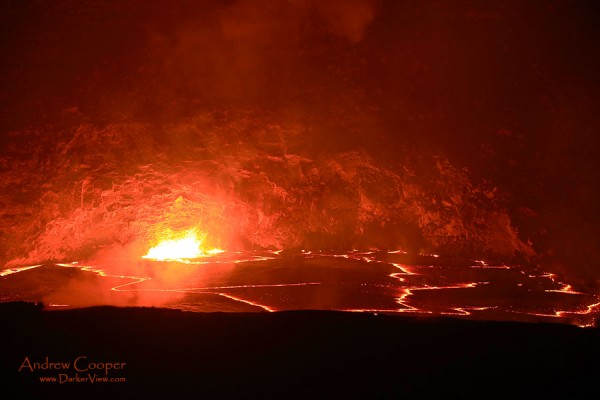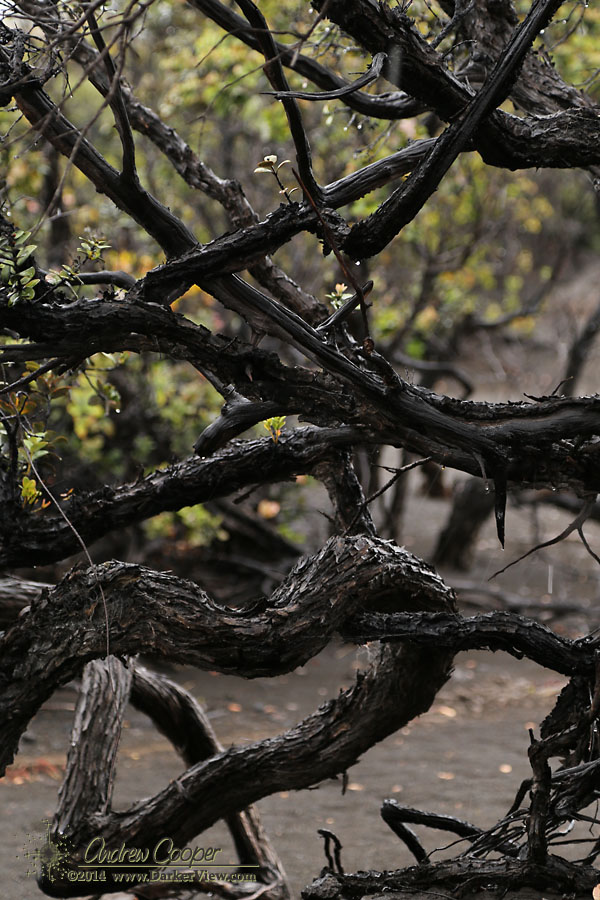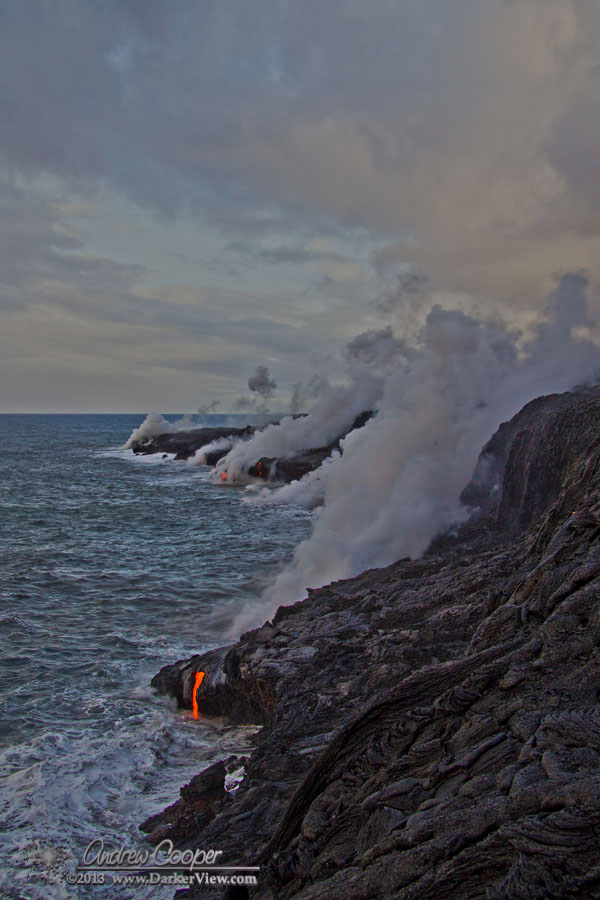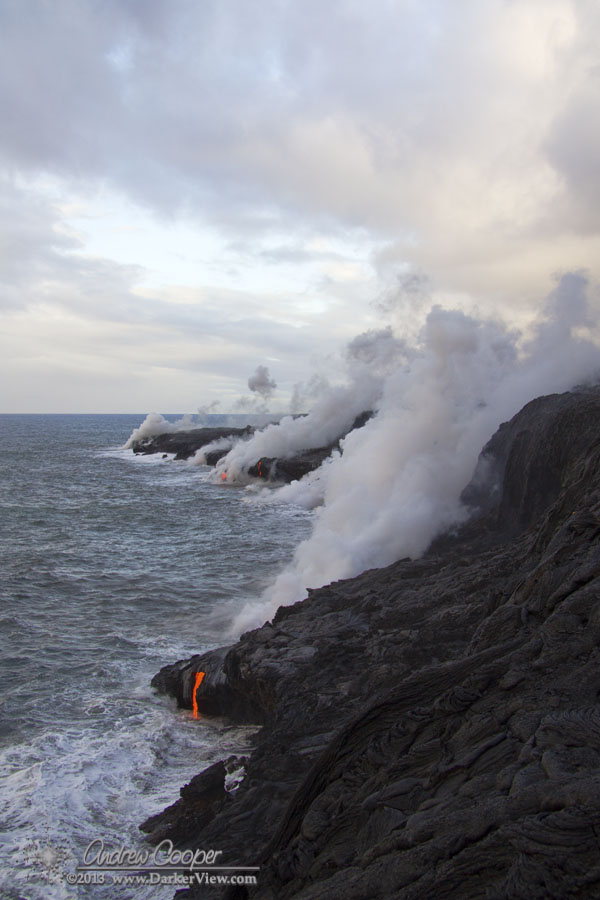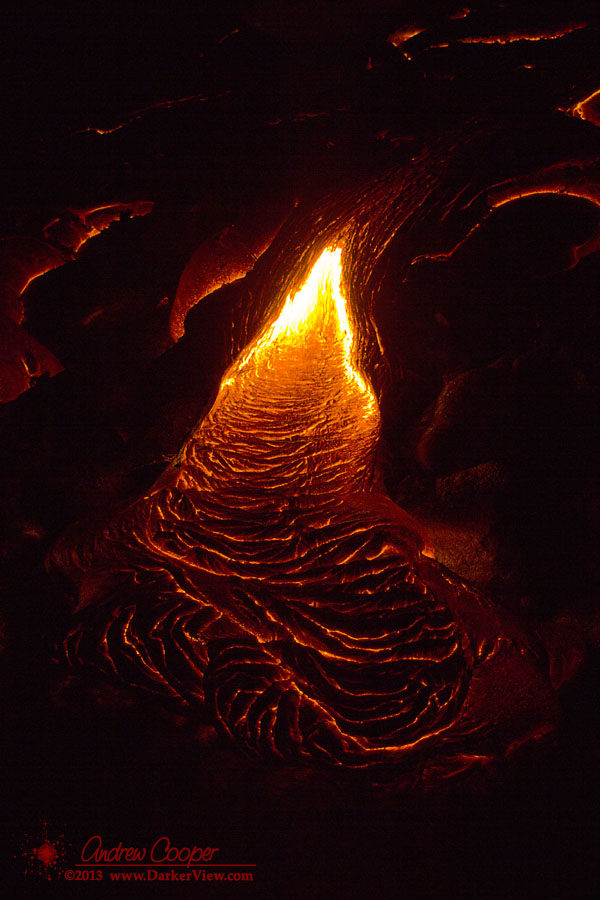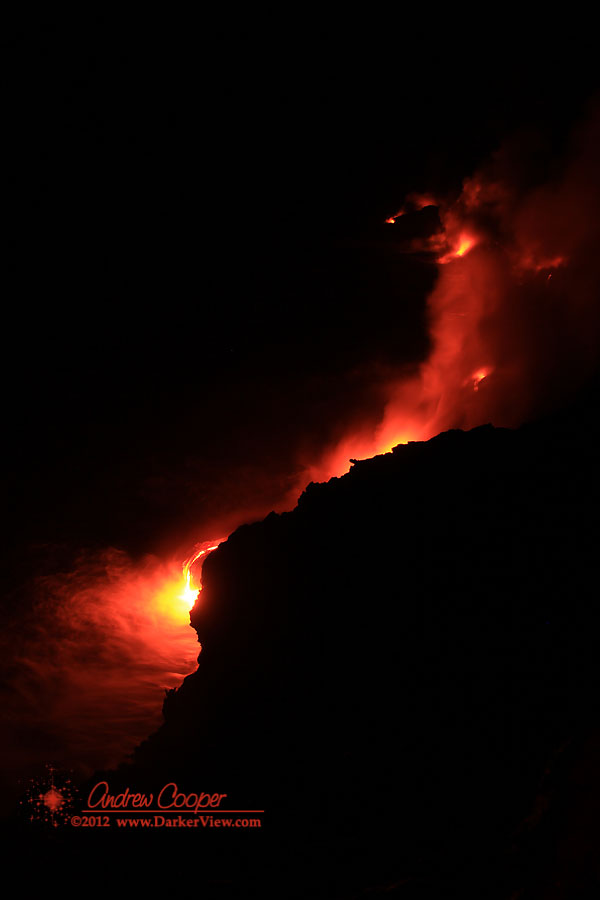An excellent video showing how pāhoehoe lava flows advance. A flow is a surprisingly complex process. A quick look or photograph will fail to reveal what it going on, it takes time to observe something that occurs this slowly. I have spent hours watching and filming flow fronts advance, totally amazed at what I saw when I really watched…
Time lapse shows the process more clearly than watching in person. It is the inflation of a pāhoehoe flow that shows in a compressed timescale. A flow a foot or two thick becomes six or ten feet thick over the course of a few hours. Also revealed are how other features of the flow form… The ropy surface, the broken plates, the cracks where lava has oozed out. After having watched a flow in process I see old lava flows in an entirely new way.
Below is an old video, filmed over several visits to the lava during the summer of 2010. I have better material now. Some time I need to put it together into a new video. Still, you can see the process of breakout, advance, crust over, inflate, then breakout again.
Flowing Rock from Andrew Cooper on Vimeo
I have yet to have an opportunity to see an ʻaʻā flow advancing. They move entirely differently. I understand the sound of an ʻaʻā flow is impressive, a moving gravel pile of grinding and falling rock.

